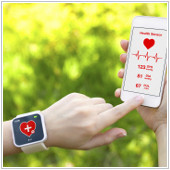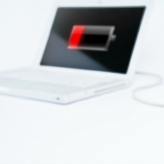 Microsoft will be revealing the Lumia 950, an all-new and high-end Windows Phone, at its annual event this coming October 6th. In an attempt to target the upper segment of the smartphone market, Microsoft has gone out of its way to install powerful hardware on the Lumia 950, enhancing its features to meet constantly evolving user needs.
Microsoft will be revealing the Lumia 950, an all-new and high-end Windows Phone, at its annual event this coming October 6th. In an attempt to target the upper segment of the smartphone market, Microsoft has gone out of its way to install powerful hardware on the Lumia 950, enhancing its features to meet constantly evolving user needs.
Microsoft has been working hard on developing the Lumia 950, the first smartphone to utilize its Windows 10 Mobile operating system. The rumors about the Microsoft Lumia 950, codenamed “Talkman”, have been around for a good while now. Here’s what you need to know about the tech giant’s latest smartphone product.
Design and display
Rumor has it that the latest Lumia 950 will come with a metal frame, coated with matte white or black polycarbonate, with a thickness of just 8.89mm thickness. The device will sport a 5.2-inch screen display, with a Quad HD resolution of 2,560 x 1,440 pixels.
Hardware
The Lumia 950 is going to boast a 64-bit Hexa core, most likely the Qualcomm Snapdragon 808 processor, as well as 3GB of RAM and an internal storage capacity of 32GB. Users have the option of expanding the memory with a microSD card.
Camera
Microsoft will integrate a powerful 20-megapixel PureView primary rear camera, capable of shooting high-definition video, and a 5-megapixel front-facing camera. Additional features include optical image stabilization, autofocus, and social media geotagging.
Battery
It is said that Microsoft’s new Lumia 950 will incorporate Qualcomm’s Quick Charge 2.0 technology, allowing for faster battery charging (up to 60% within just 30 minutes). The Lumia 950 will be equipped with a detachable 3,000mAh battery, so you can expect it to last for a full day, even with heavy use.
Price and release date
Although Microsoft hasn’t yet revealed the exact price or a release date for the upcoming Lumia 950, the price point is expected to rival that of the iPhone 6s. The release date is most likely to be on October 10, the very same day Microsoft plans to launch its brand new operating system for smartphones, Windows 10 Mobile.
Overall, the Lumia 950 comes with plenty of improvements that Windows Phone fans will love. It is faster, lasts longer, and is more stable. Want to learn more about Windows Phone and how to use it in your office? Get in touch today.

 With October 6th’s much-anticipated Microsoft Event approaching, Windows Phone users are looking forward to the release of the tech giant’s new flagship – the Lumia 950. This latest release from the Lumia family is expected to come with powerful hardware and a premium polycarbonate body.
With October 6th’s much-anticipated Microsoft Event approaching, Windows Phone users are looking forward to the release of the tech giant’s new flagship – the Lumia 950. This latest release from the Lumia family is expected to come with powerful hardware and a premium polycarbonate body. Somewhere in your Business Continuity Plan (BCP) is a section detailing what is expected from employees during a disaster. Unfortunately, many companies end up overlooking this aspect of their BCP and assume their staff knows what to do. This can lead to problems, as employees won’t necessarily perform the functions required to keep your company operating. Here are a few steps to take to ensure this doesn’t happen to you.
Somewhere in your Business Continuity Plan (BCP) is a section detailing what is expected from employees during a disaster. Unfortunately, many companies end up overlooking this aspect of their BCP and assume their staff knows what to do. This can lead to problems, as employees won’t necessarily perform the functions required to keep your company operating. Here are a few steps to take to ensure this doesn’t happen to you. One of the most neglected aspects of a Business Continuity Plan (BCP) is what happens to employees. Much emphasis is put on protecting and recovering data, but your employees are just as valuable to keep your company running. By setting up your company’s BCP with detailed instructions on working from home during a disaster, your employees can help you make it through anything. Here’s how you can do it.
One of the most neglected aspects of a Business Continuity Plan (BCP) is what happens to employees. Much emphasis is put on protecting and recovering data, but your employees are just as valuable to keep your company running. By setting up your company’s BCP with detailed instructions on working from home during a disaster, your employees can help you make it through anything. Here’s how you can do it. Disasters can come in all shapes and sizes. No matter what happens, your business can be prepared by creating a Business Continuity Plan (BCP). It’s important for your BCP to address the roles of your staff members, so that they are able to assist in keeping the company running during these stressful occasions. Make sure your employees are always prepared by following these steps.
Disasters can come in all shapes and sizes. No matter what happens, your business can be prepared by creating a Business Continuity Plan (BCP). It’s important for your BCP to address the roles of your staff members, so that they are able to assist in keeping the company running during these stressful occasions. Make sure your employees are always prepared by following these steps. Last week, Apple revealed a new app to go along with its Apple Watch that could permanently change the way Healthcare is provided. Through an app known as AirStrip and the new watchOS 2 software, the Apple Watch will allow medical professionals to connect with patients in ways never before thought possible. Here are some of the features the healthcare industry is getting excited about.
Last week, Apple revealed a new app to go along with its Apple Watch that could permanently change the way Healthcare is provided. Through an app known as AirStrip and the new watchOS 2 software, the Apple Watch will allow medical professionals to connect with patients in ways never before thought possible. Here are some of the features the healthcare industry is getting excited about. Even in today’s world where electrical outlets are more numerous than ever before, there will still be times you need to push your laptop’s battery to the edge. Ever wish you could buy yourself a few extra minutes by extending your battery life? Here are a few tips to help you get every last drop of energy from your laptop battery.
Even in today’s world where electrical outlets are more numerous than ever before, there will still be times you need to push your laptop’s battery to the edge. Ever wish you could buy yourself a few extra minutes by extending your battery life? Here are a few tips to help you get every last drop of energy from your laptop battery. Have you ever seen that your laptop battery life was in the red and started looking around frantically for an electrical outlet only to find nothing? It’s a pretty stressful situation, especially if you are working on something important. Here are a few things you can do to buy a few more minutes of life from your laptop battery.
Have you ever seen that your laptop battery life was in the red and started looking around frantically for an electrical outlet only to find nothing? It’s a pretty stressful situation, especially if you are working on something important. Here are a few things you can do to buy a few more minutes of life from your laptop battery. There is nothing quite as annoying as getting a message from your laptop that your battery is about to run out. Even with the longer lasting laptop batteries of today, there will be an occasion where you need every last second from it, and maybe even a little more. Here are some pointers on how you can squeeze a little extra out of your laptop battery.
There is nothing quite as annoying as getting a message from your laptop that your battery is about to run out. Even with the longer lasting laptop batteries of today, there will be an occasion where you need every last second from it, and maybe even a little more. Here are some pointers on how you can squeeze a little extra out of your laptop battery. Static biometrics emerged from the theory that a password or a PIN number can be stolen, while something unique to your body like the face, fingers, eyes and ears can’t. But the fact is that static biometrics have their shortcomings – the system uses proprietary technology with limited use, and is only available on high-end smartphones. With that comes behavioral biometrics, a technology that could very well be the next generation of mobile phone security.
Static biometrics emerged from the theory that a password or a PIN number can be stolen, while something unique to your body like the face, fingers, eyes and ears can’t. But the fact is that static biometrics have their shortcomings – the system uses proprietary technology with limited use, and is only available on high-end smartphones. With that comes behavioral biometrics, a technology that could very well be the next generation of mobile phone security. Static biometrics like fingerprint sensors should make life a lot easier; no longer do we have to type in security passwords on our mobile phones, or risk having passwords breached. Still, this technology is only available on high-end smartphones, and is not ubiquitous. But thanks to behavioral biometrics, the future of mobile phone security could soon very well change for good. To that end, here’s all you need to know about behavioral biometrics.
Static biometrics like fingerprint sensors should make life a lot easier; no longer do we have to type in security passwords on our mobile phones, or risk having passwords breached. Still, this technology is only available on high-end smartphones, and is not ubiquitous. But thanks to behavioral biometrics, the future of mobile phone security could soon very well change for good. To that end, here’s all you need to know about behavioral biometrics. It’s not long since static biometrics, like fingerprint sensors, first became available on mobile phones, allowing us, in theory, to do away with PIN numbers and security passwords. Still, static biometrics are only available on high-end smartphones and use proprietary technology that limits their use. But things are about to change with what could very well be the next generation of mobile phone security, behavioral biometrics. Here we’ll explore all you need to know about the technology.
It’s not long since static biometrics, like fingerprint sensors, first became available on mobile phones, allowing us, in theory, to do away with PIN numbers and security passwords. Still, static biometrics are only available on high-end smartphones and use proprietary technology that limits their use. But things are about to change with what could very well be the next generation of mobile phone security, behavioral biometrics. Here we’ll explore all you need to know about the technology.